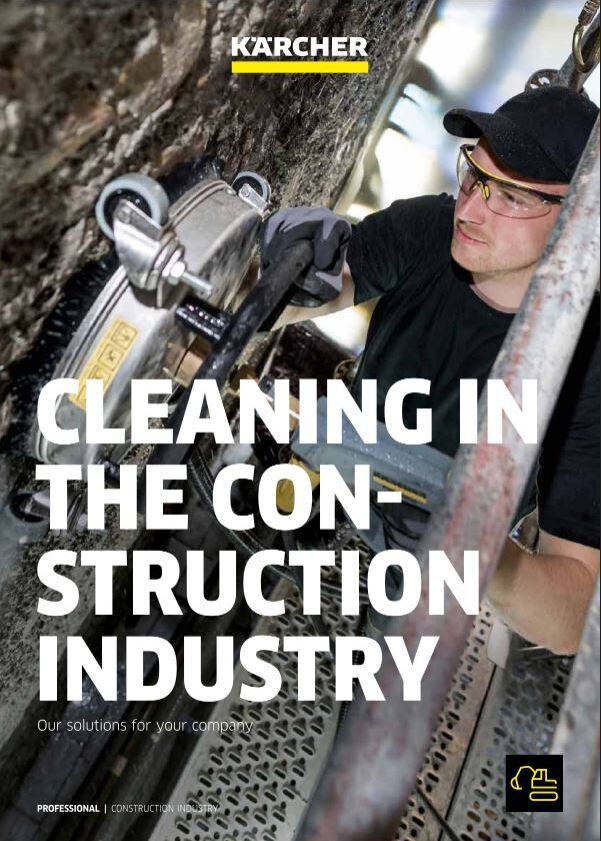Cleaning construction equipment
The construction equipment industry is no stranger to tough and messy environments. Constant exposure to dirt, mud, clay, paint, and varnish splashes, as well as the accumulation of dried concrete, can cause significant wear and tear on expensive equipment. To ensure the longevity and value of these machines, it is crucial to implement effective cleaning measures on the construction site, in the company, and across the vehicle fleet, including construction equipment cleaning. Maintenance and repair are equally important, and cleaning plays a vital role in the upkeep of these machines. It is key to understand the importance of cold and hot water high-pressure, ultra-high-pressure technology, dry ice, and cabin cleaning. By doing so, you can help to maintain the function and value of these costly machines, thereby ensuring the success of your business.
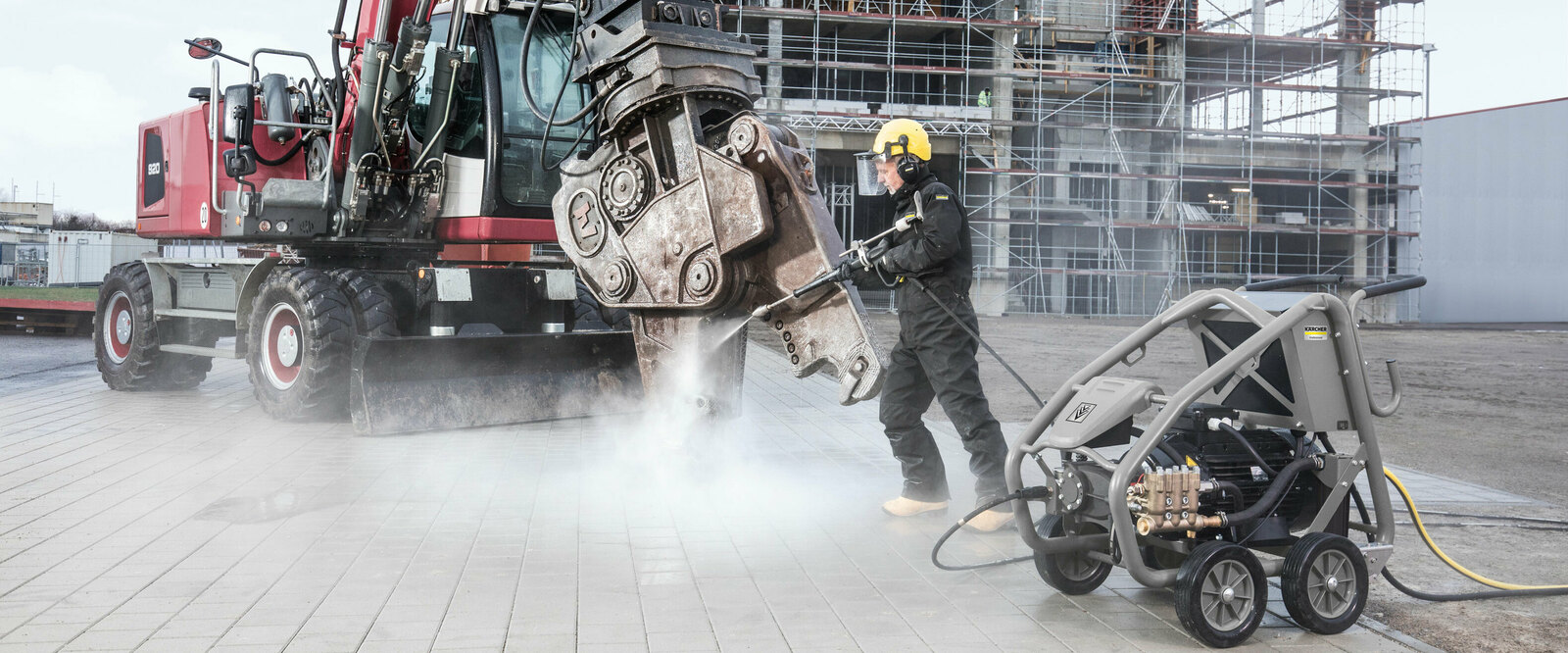
Intermediate cleaning of construction equipment on the construction site: cold water high-pressure unit
Whether it's a crane, a dump truck, or an excavator - construction machines work under the toughest conditions and still have to be 100 percent functional. To ensure that they also run smoothly during a construction phase, it’s essential to clean construction machinery such as cranes at the construction site between jobs.
The machines should also be cleaned before traveling from a construction site to the plant to not endanger road traffic by becoming too dirty. Here, cold water high-pressure is advantageous as machine components such as chains, buckets or wheels can be efficiently cleaned with short set-up times and without the use of cleaning detergents.
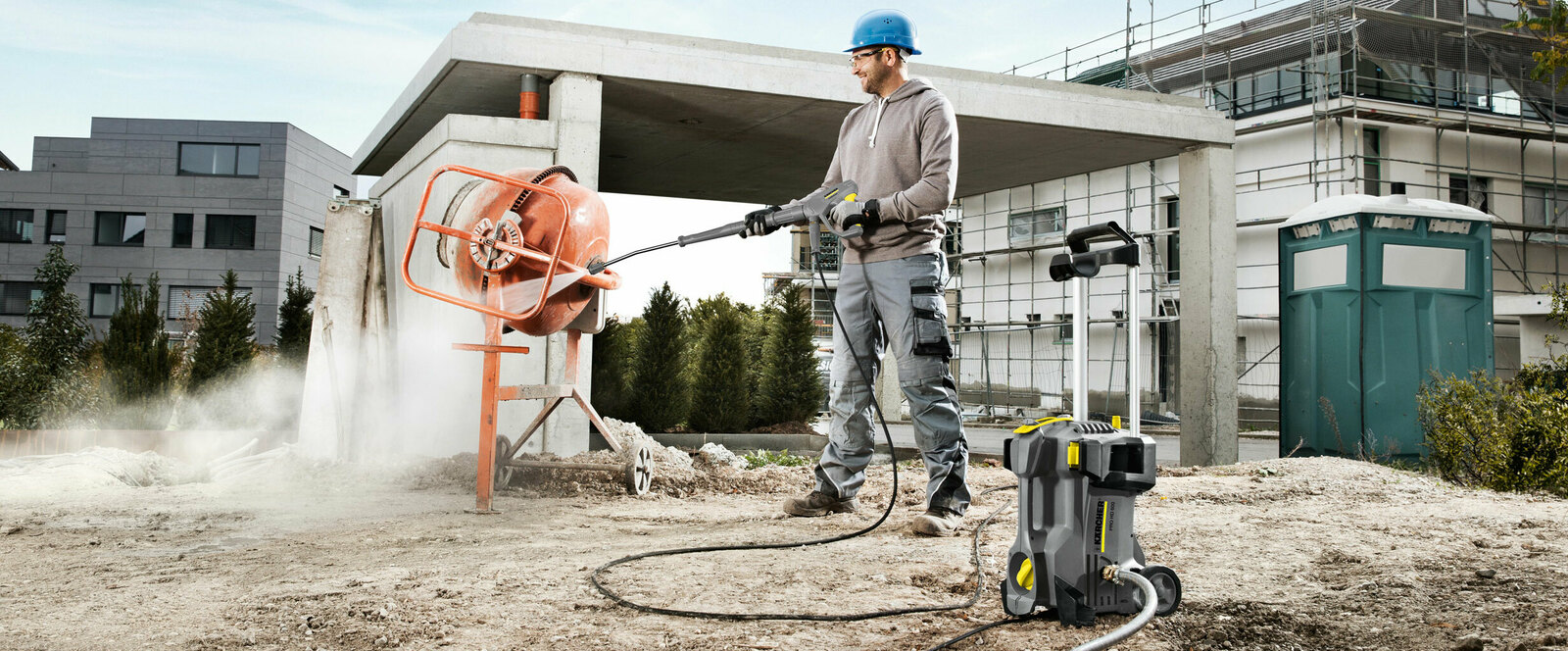
Tip – Using HD Trailers:
An HD trailer can be used to effectively remove stubborn dirt from scaffolding, concrete bells or formwork directly on the construction site.
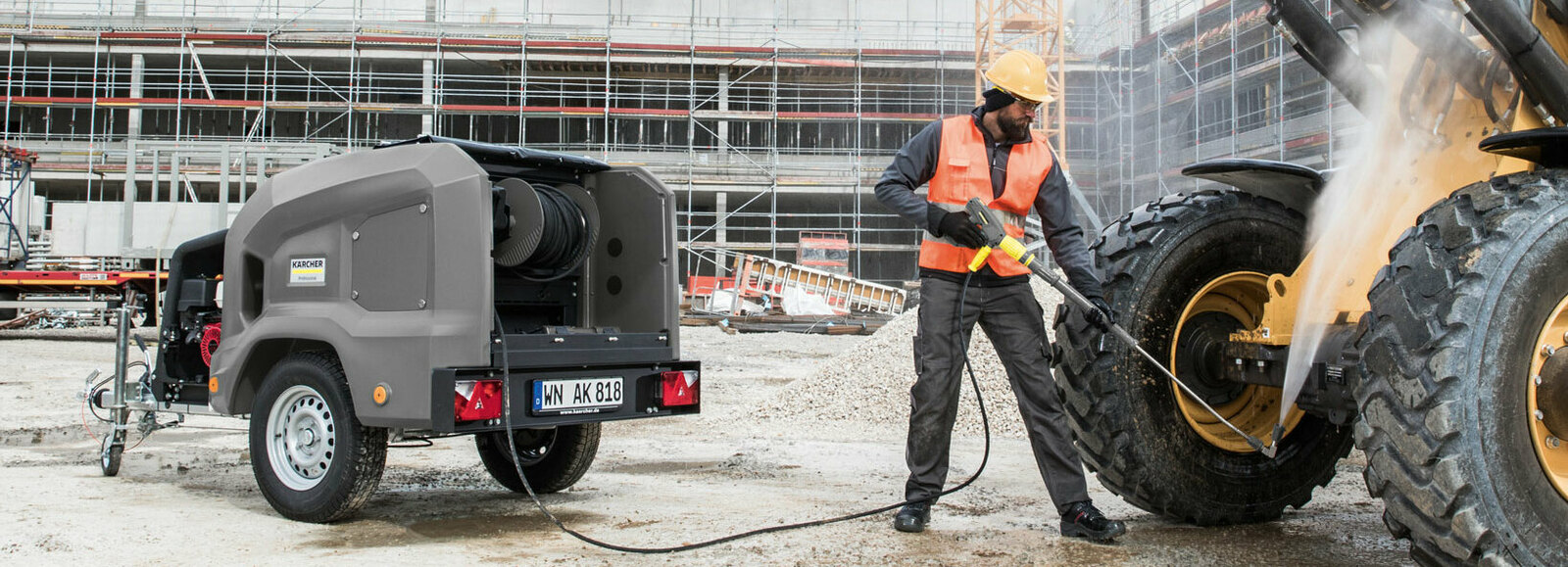
Technique and working method: what is important when cleaning heavy construction machinery?
High-pressure cleaners used on construction sites have specific requirements that must be met. A durable design is essential for easy transportation, whether it’s lashed to pallets or moved around the construction site via crane hook. In addition to a minimum pressure of 200 bar, the cleaner needs a water delivery rate of at least 1,000 litres per minute to effectively remove large quantities of dirt from construction equipment. The choice between electric, diesel, or gasoline-powered models will depend on the site's specific requirements. Water can be supplied via an on-site connection, tank, or HDS trailer, depending on the unit and circumstances.
Various nozzle accessories are available, each with their specific functions. Flat jet nozzles are useful for removing coarse surface dirt, while point jet nozzles are ideal for loosening hardened dirt on small surfaces. Multi jet rotary nozzles are the perfect choice for combining both functions, featuring multiple outlets with spot jets rotating to provide high force to larger areas, making them ideal when cleaning formwork.
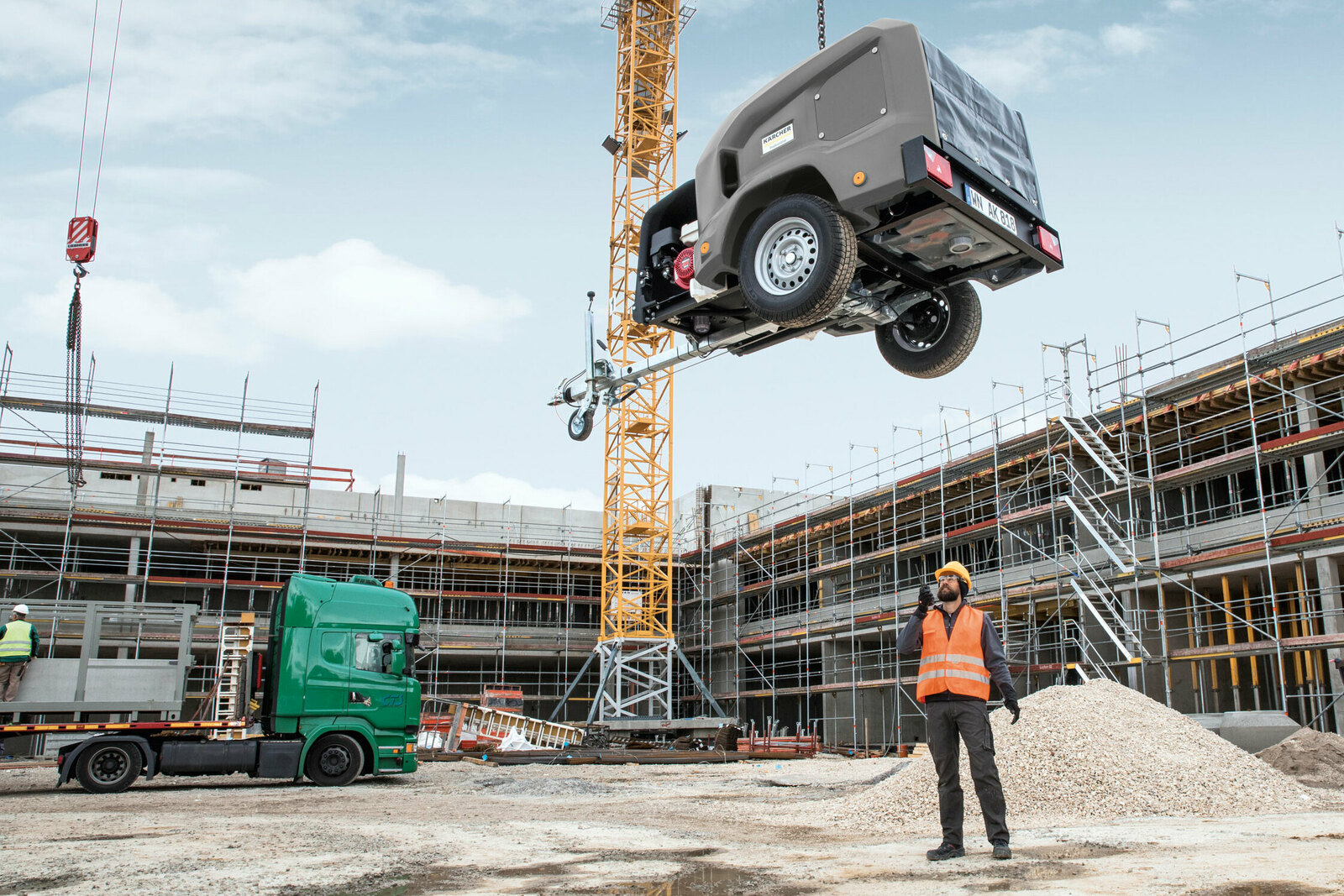
Tip – Thorougly clean the cement mixer:
A helpful tip for maintaining your cement mixer is to ensure thorough cleaning. To achieve this, simply add water and gravel to the mixer after it has been emptied and run it for a few minutes. Repeat this process as necessary. If any concrete residues remain, applying a concrete solvent and rinsing it off with a high-pressure cleaner can effectively remove them.
Basic cleaning methods for construction equipment in operation: hot water high-pressure, cleaning detergents and more
Following the construction phase, construction machinery is returned to the plant or fleet, where basic cleaning is necessary for maintenance and repair work. Sometimes, damage may only become apparent after extensive dirt removal, making it important to prevent gradual damage that could lead to costly repairs in the long run.
Temperature, pressure, and chemistry: cleaning construction equipment quickly at the wash station
When it comes to achieving effective cleaning results, stationary installations equipped with hot-water high-pressure cleaners are typically the way to go. The high temperature of the water allows for quick and efficient cleaning, particularly when dealing with stubborn greasy and oily dirt.
For an added boost, a cleaning detergent can be used. However, it‘s essential to use a separator-friendly cleaning detergent marked ASF to ensure that the oil separator is functioning correctly, and the required water treatment is carried out reliably.
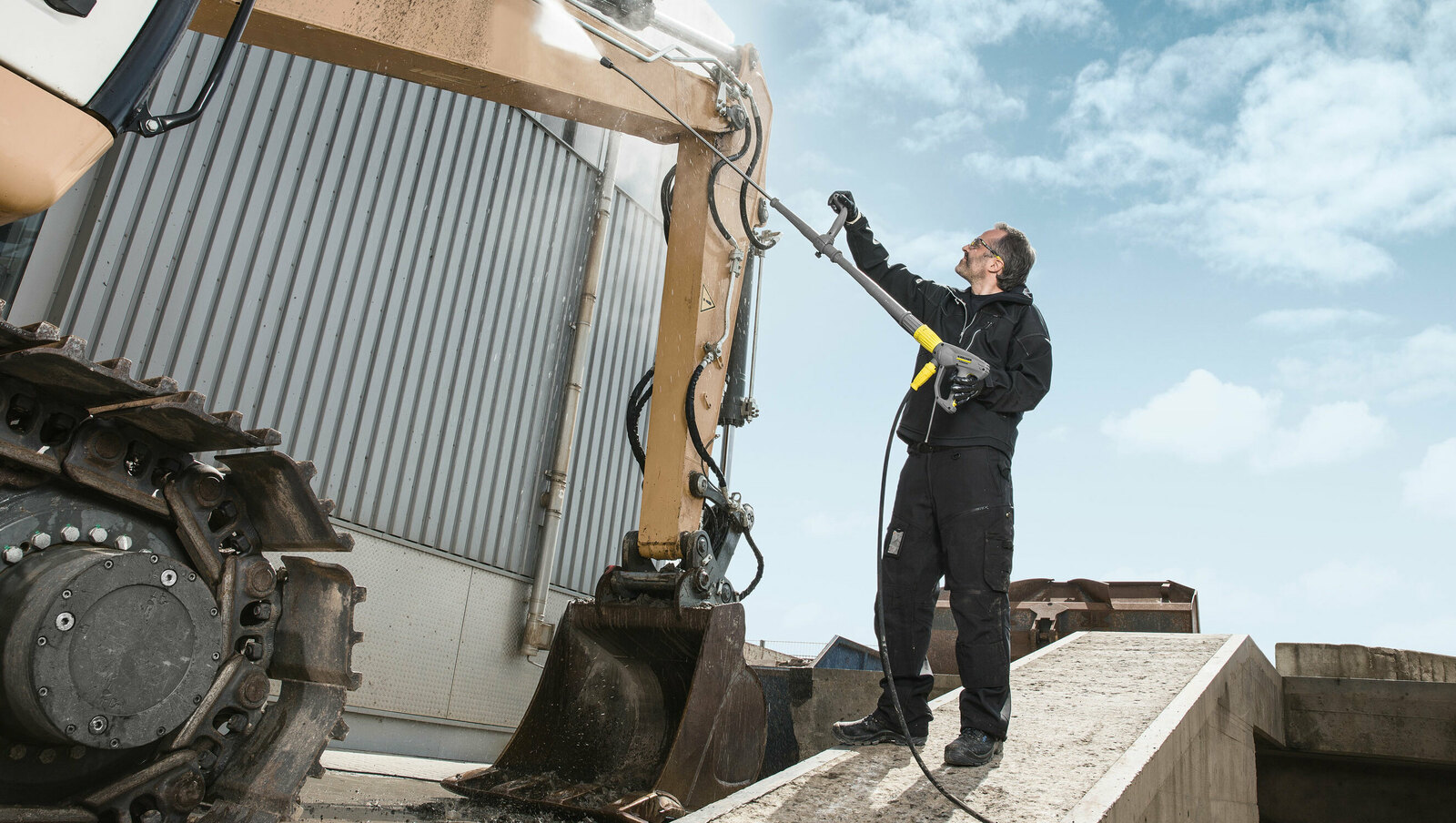
Tip – Use a tire and coarse dirt washing system:
Investing in a tire and coarse dirt washing system can be a worthwhile choice for construction companies or equipment rental companies with a large fleet. This system can efficiently clean the tires, axles, underbody, front, sides, and undercarriage of tracked vehicles, offering a much faster alternative to manual cleaning of construction equipment. Even 50 ton machines, such as screening and crushing plants, can be cleaned using this method if the system is appropriately designed.
Pay attention to the discharge specifications for wastewater when cleaning construction equipment
Cleaning heavy construction machinery generates significant quantities of dirty water, which can contain dissolved oils from the equipment's hydraulics. It is essential to follow the applicable local wastewater laws and the UK’s water treatment regulations to ensure that the wastewater is properly managed. To meet these requirements, washing stations in the plant should be equipped with oil separators and, if necessary, water treatment systems.
Dry ice blasting is a cleaning solution for sensitive high-performance construction equipment
Construction machines are typically designed to be robust, allowing for effective cleaning with high-pressure. However, spot cleaning before maintenance or detailed cleaning during construction machinery reconditioning requires a gentle, residue-free, and efficient cleaning technology. The same applies to restoring surfaces made of sensitive materials, where dry ice blasting technology can be employed. One significant advantage of dry ice blasting is the absence of water, which allows safe cleaning in proximity to sensitive systems or electrical installations.
Dry ice blasting: how cleaning construction equipment works
The method involves using CO2 granules as the blasting medium, which sublimates into CO2 gas upon hitting the surface. This eliminates any blasting media residue and ensures gentle cleaning of construction equipment.
Dry ice blasting is ideal for areas where water can’t be used, and various nozzle geometries and sizes are available for specific applications. Pellets can also be crushed for even gentler cleaning in a scrambler. Dry ice blasting units come in both large and small sizes and can be operated with a compressed air supply or a compressor with the option of using externally supplied pellets or generating them internally.
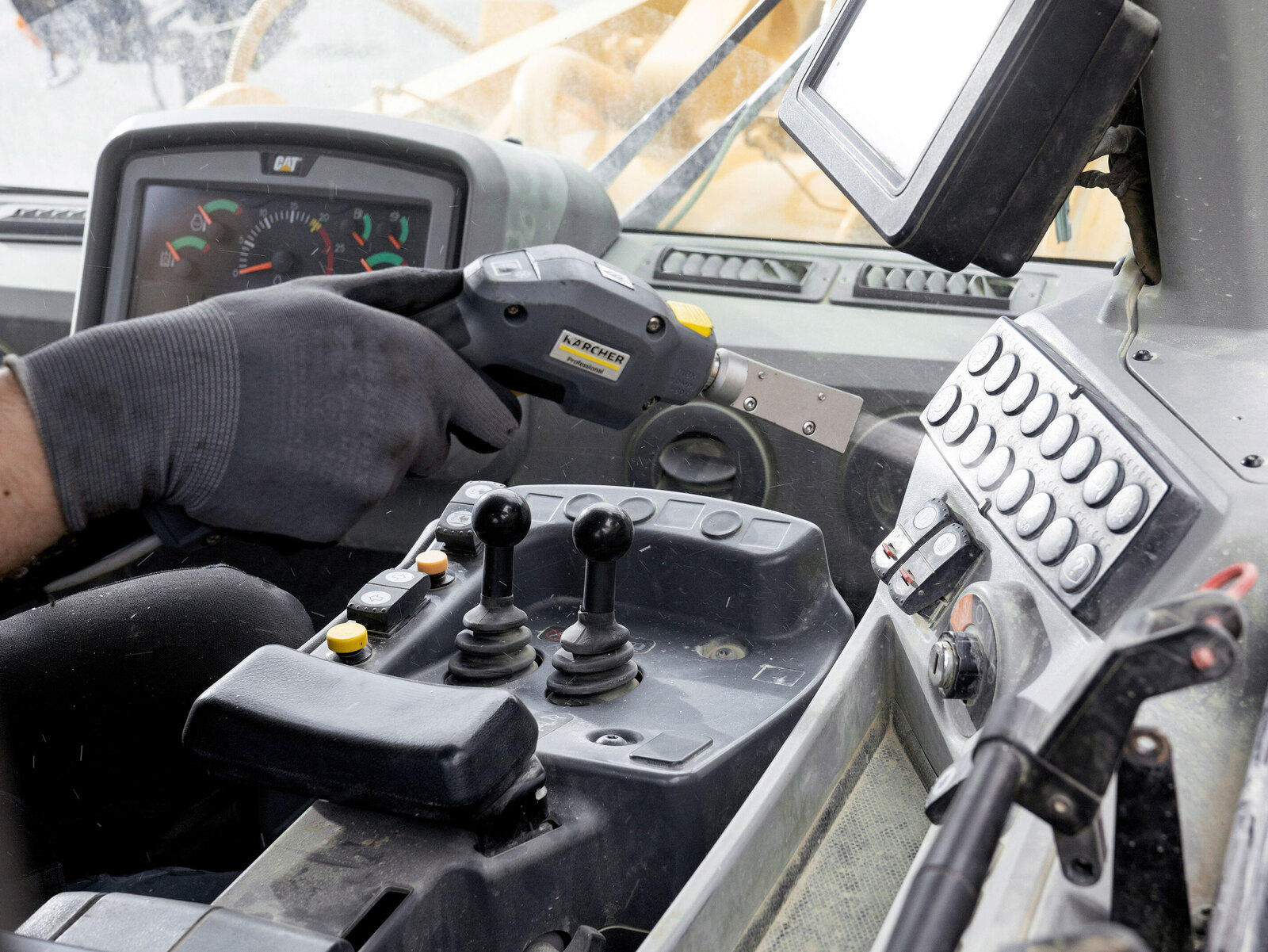
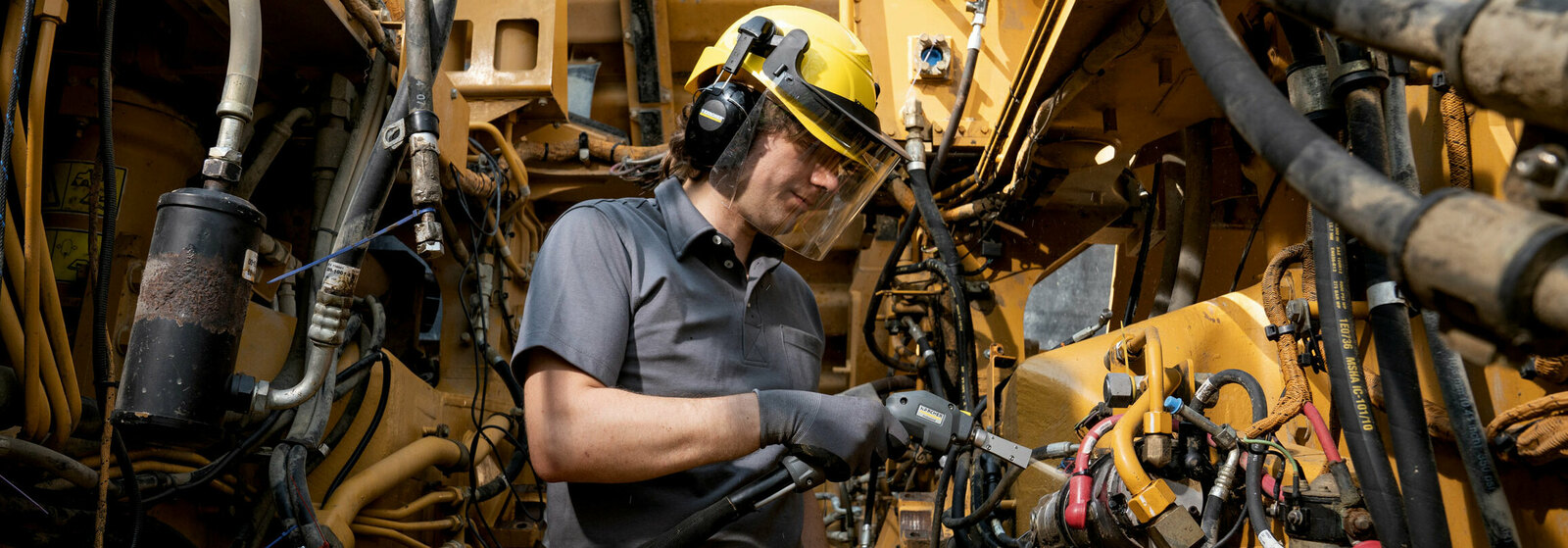
Maintenance cleaning and reconditioning: dry ice to clean and wash construction machinery such as excavators
In preparation for repairs, it is crucial to clean the work area thoroughly. Dry ice blasting is a highly effective method for spot cleaning, particularly when servicing the engine compartment, removing exhaust gas residues from the exhaust gas recirculation valve, or eliminating oil, grease, or wax residues from axle components or bearings. This technique is especially beneficial for high-performance machinery as it can clean small components, electronics, and hydraulics without causing any damage.
Tip 1 – Clean sealing surfaces:
When replacing components, it's essential to clean the sealing surfaces thoroughly before installing new parts. Using dry ice to clean these surfaces can result in a smooth and scratch-free finish, without the need for solvents that require rubbing and can cause scratches.
Tip 2 – Use dry ice for preparing the interior of a vehicle:
Dry ice is also useful for preparing the interior of a vehicle. By using low pressure and a scrambler, dry ice can efficiently remove dirt or stains from door folds, fittings, buttons, seat upholstery, box covers, and air vents without introducing moisture, making it an excellent cleaning option.
Cleaning cabs of construction equipment: good for users and work safety
Thoroughly cleaning the cab of construction machines is key in preventing damage to sensitive components such as electrics, hydraulics, and electronics caused by fine dirt, dust particles, and moisture. Additionally, clean cabs allow employees to breathe in air with lower levels of dust contamination, reducing the risk of respiratory illnesses.
Window cleaning is also a critical aspect of cab cleaning, as dirty windows can lead to reduced visibility, inefficient machine function, and higher probability of accidents or damage. Therefore, regular cleaning of the cab and windows is necessary to ensure the safety and optimal performance of construction machinery.
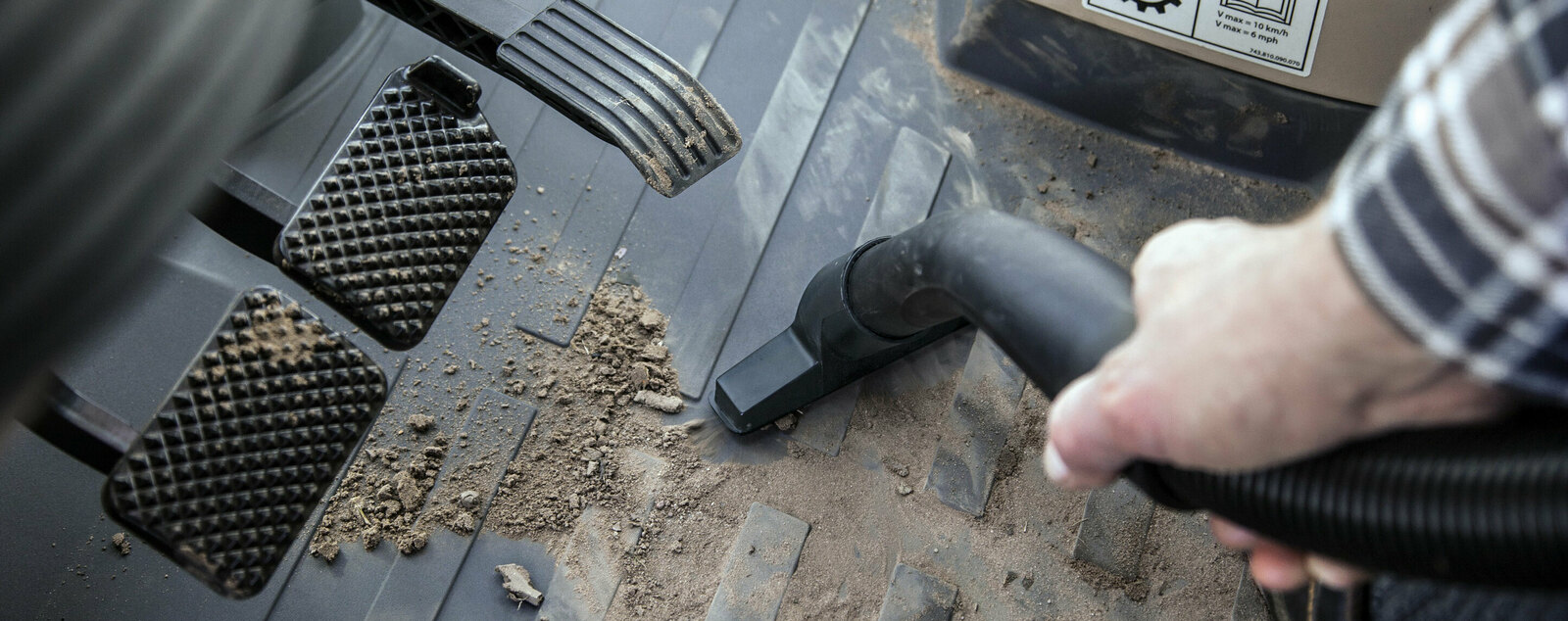
EXCURSUS – Maximum pressure against heavy soiling: formwork cleaning
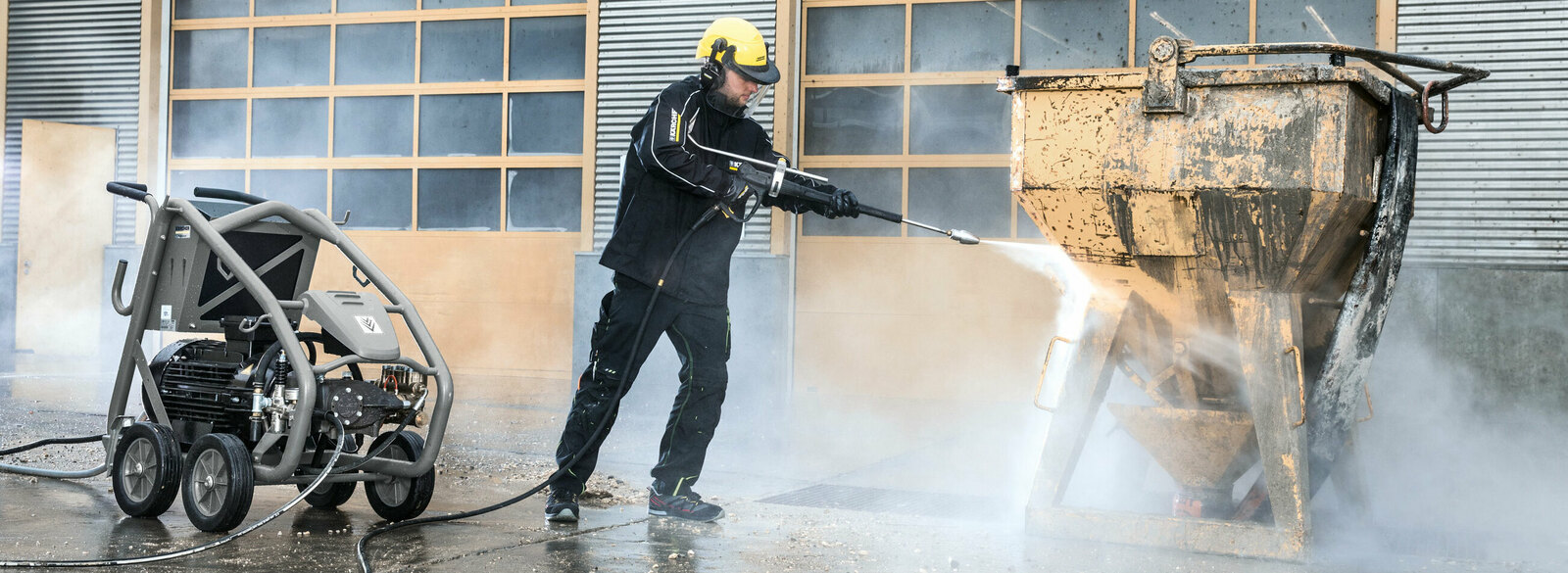
Cleaning formwork presents a unique challenge as it involves removing dried concrete from various materials such as metal frames, wood, and plastic. For delicate surfaces, low-pressure cleaners are suitable, whereas metal frames require ultra-high-pressure cleaners ranging from 500 to 1,200 bar, which require employees to wear personal protective equipment (PPE). To minimise physical strain, semi-automated solutions are becoming more popular, such as ultrahigh-pressure lances mounted on robots that systematically clean the formwork. However, these robots cannot yet distinguish between contaminated and clean areas, making it a complex task, especially in large and expensive plants.









